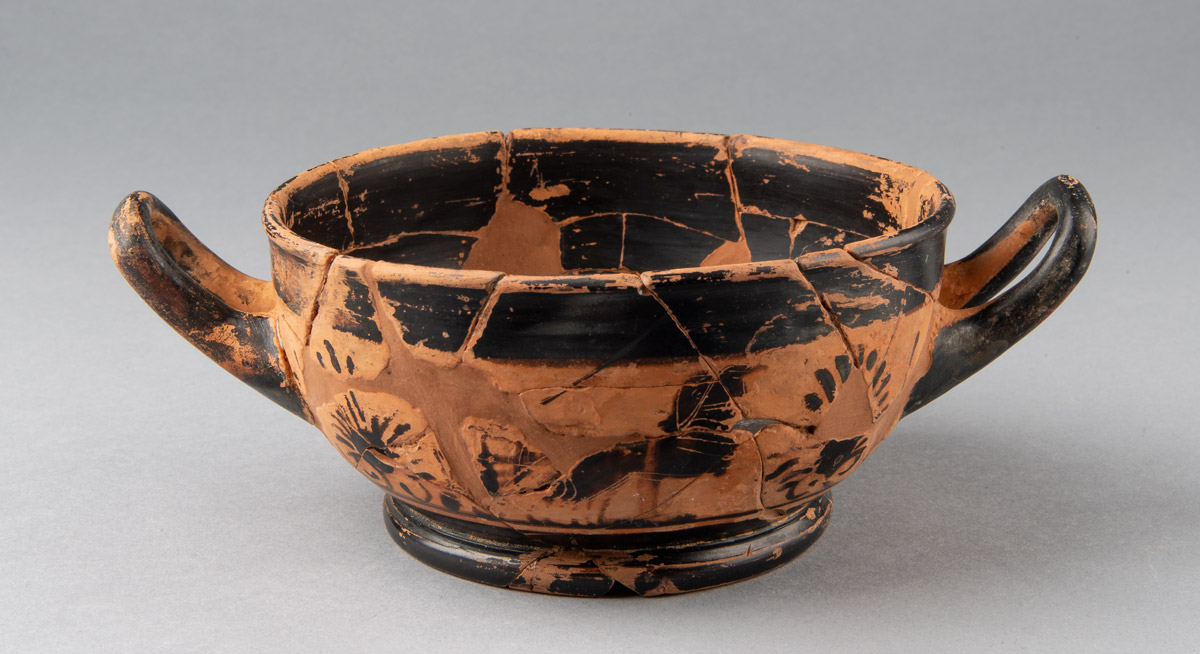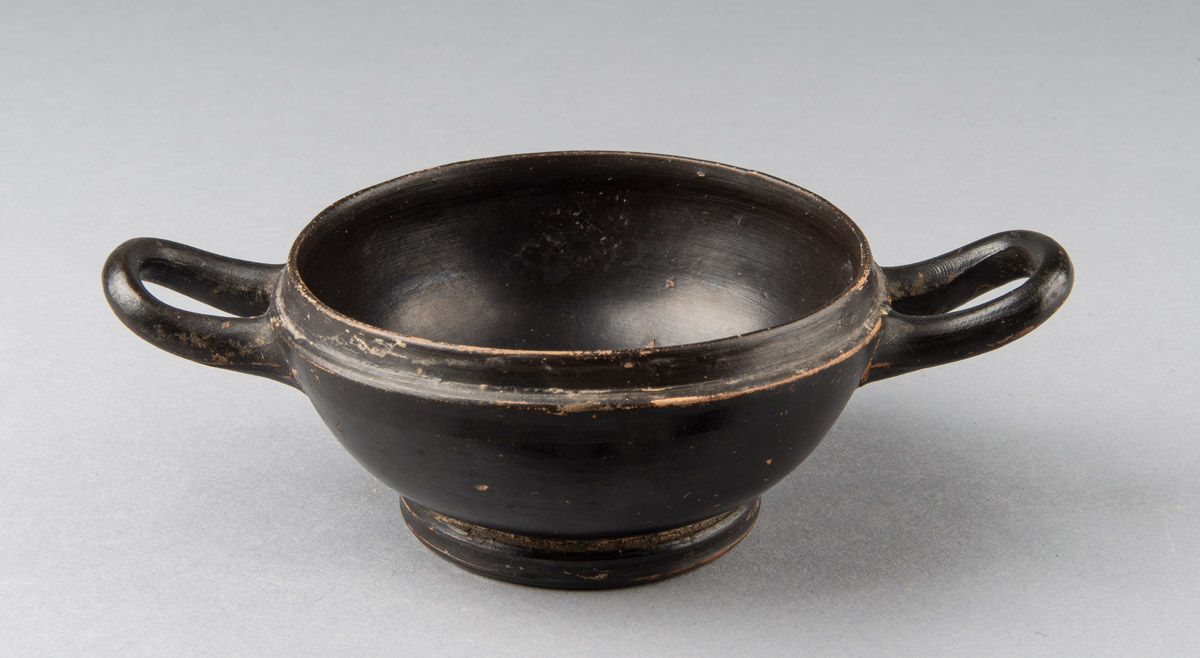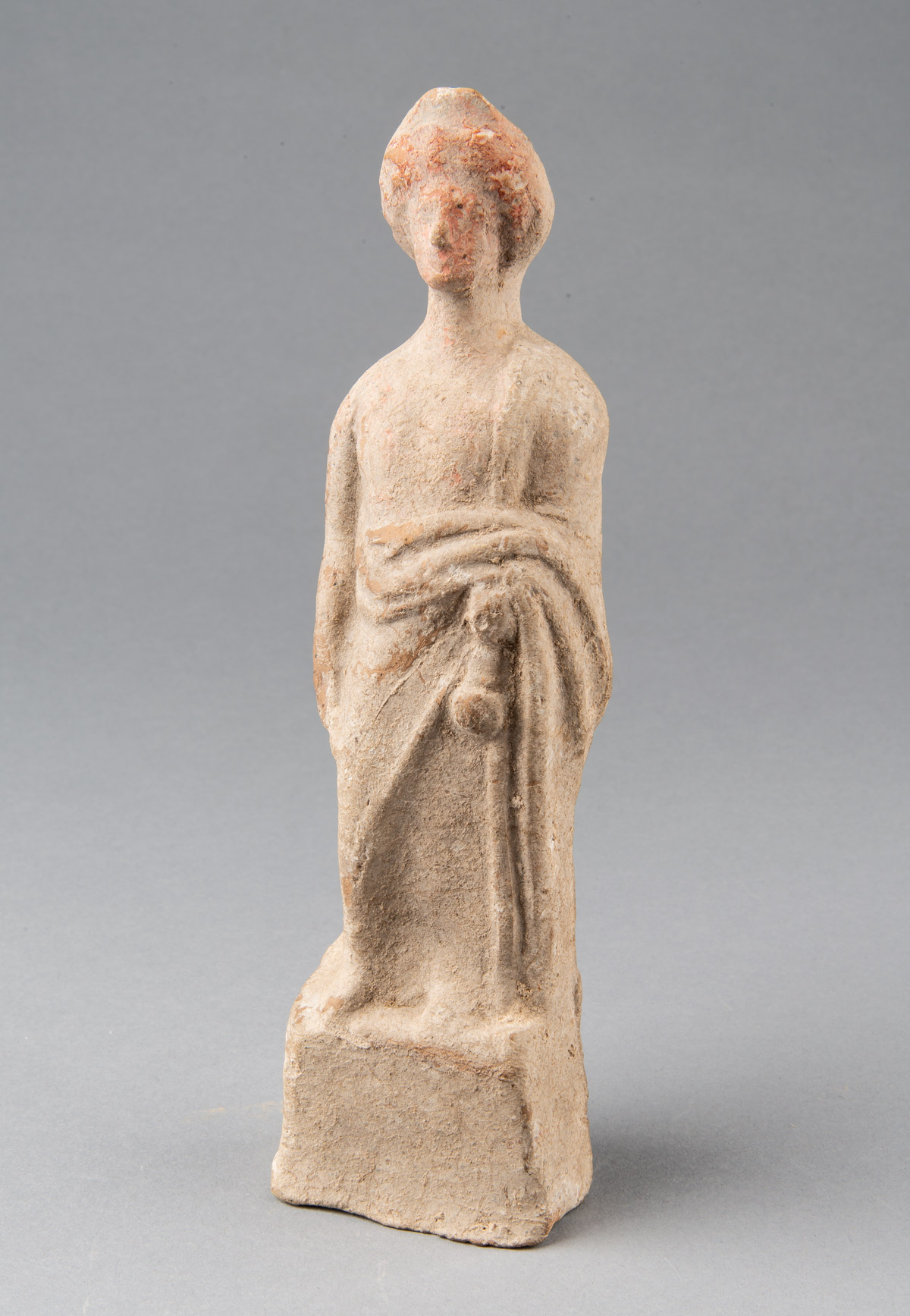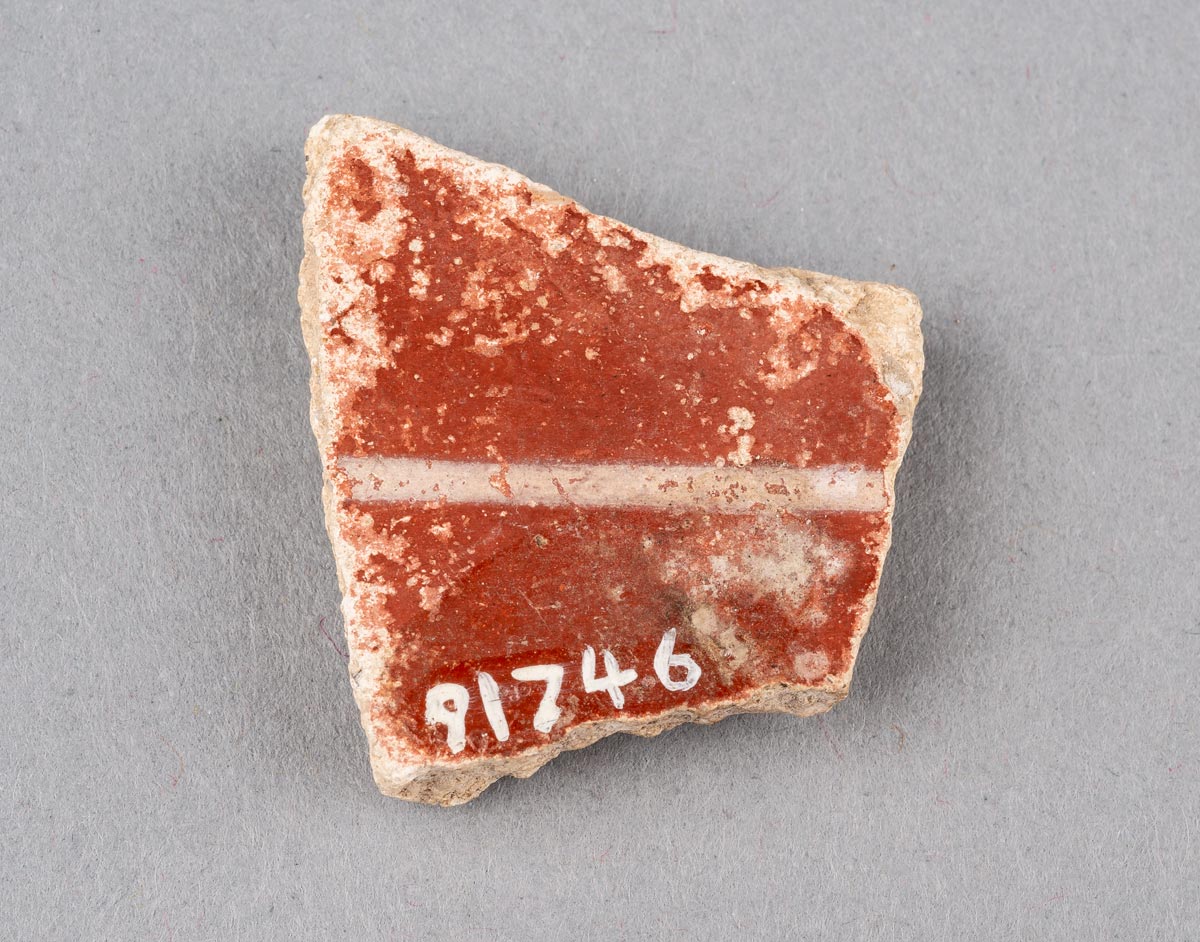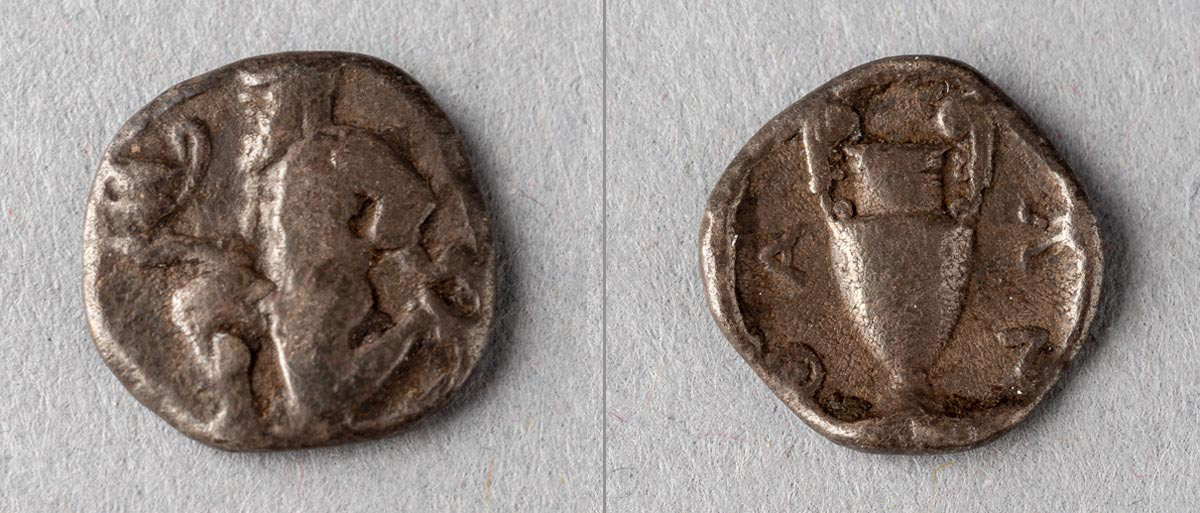Artifacts
For more than 10,000 years, people around the world have been using ceramic (baked clay) vessels, or pottery, for storing, preparing, and consuming food and drink. Because pottery does not decay like wood and other organic materials, or corrode like metal, it is often the most common type of artifact found on archaeological sites.
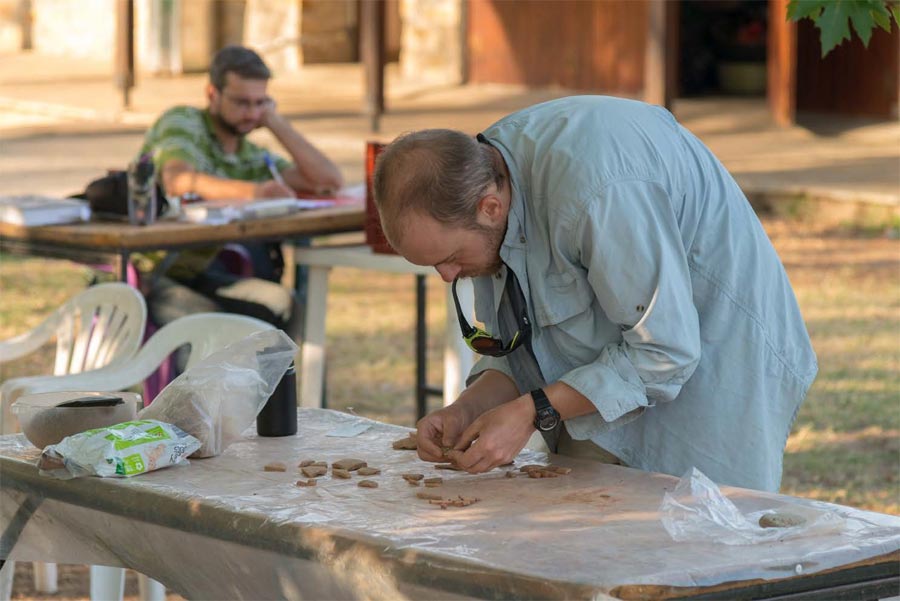
In the ancient world as today, fashions in basic household furnishings such as pottery were constantly changing. Careful study has enabled archaeologists to track these changes over time, making pottery an important form of dating evidence. Sites such as Olynthos provide crucial lynchpins in this chronology.
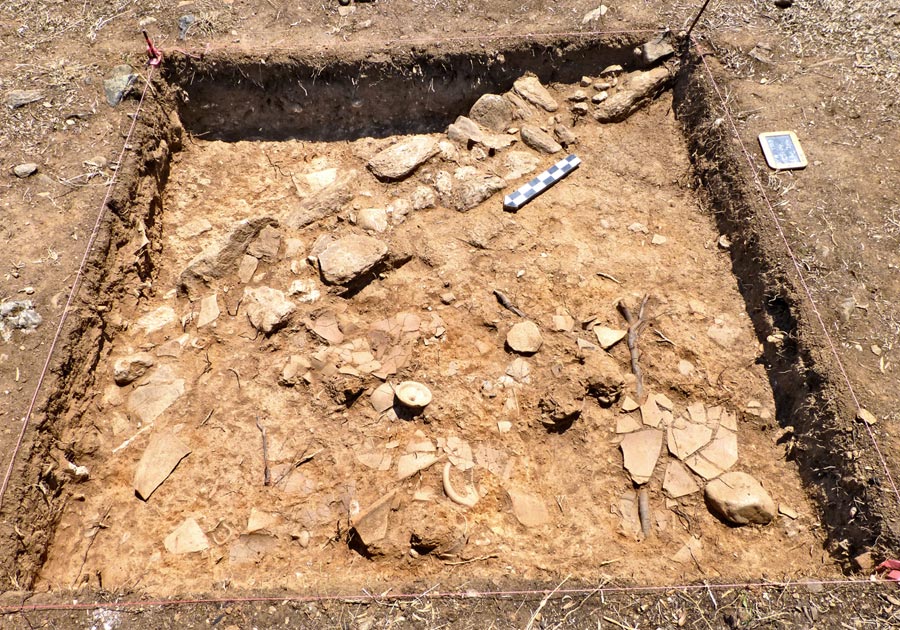
Pottery and other types of artifacts also offer valuable glimpses into the lives of the inhabitants of Olynthos. Ceramic vessels suggest a variety of activities taking place at home. Fragments of painted wall plaster and terracotta figurines give a sense of ancient home decor. Coins, accidentally dropped by members of the household or visitors and buried within the earth floors of the houses, attest the trading relationships between Olynthos and nearby towns such as the island city of Thasos.
Kelsey Museum Artifacts
Shown here are objects from the Kelsey Museum collections that illustrate the types of pottery and other artifacts found at Olynthos. Most of the objects exhibited here were acquired by gift or purchase, and it is uncertain where they were originally found.
Pottery Vessels
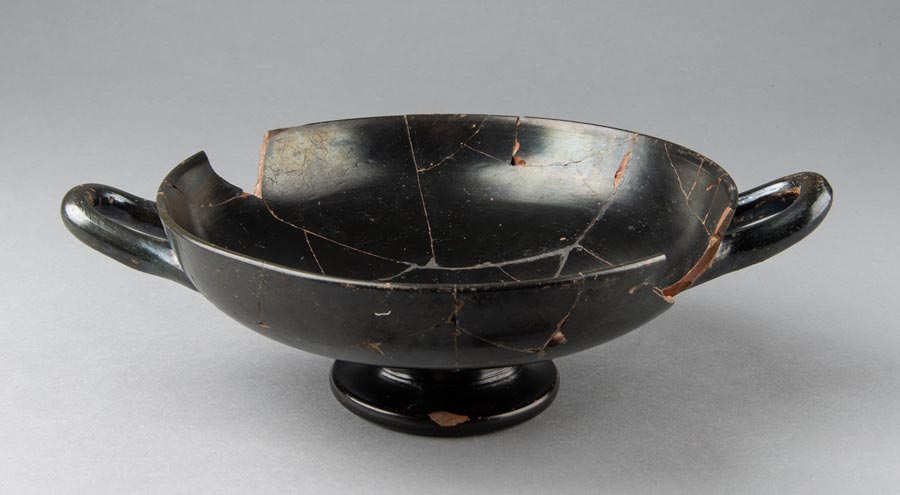
Drinking cups of various shapes were used during male drinking parties (symposia). The kylix was the classic Greek wine cup. This example was made in Athens, as were many comparable objects found at Olynthos. Its shiny black surface may have been meant to evoke the appearance of more valuable metal vessels.
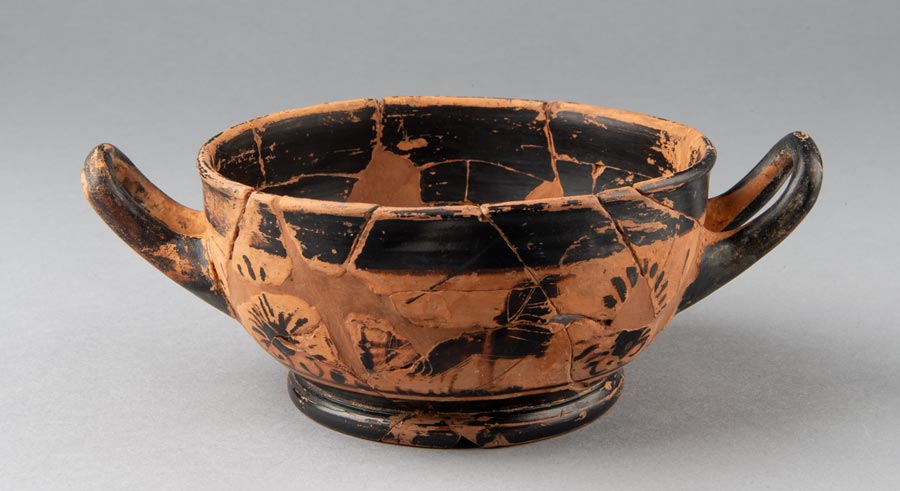
Olynthos had been inhabited for centuries before it was destroyed in 348 BC. Earlier periods in its history are represented by finds from both the settlement and graves. They include objects similar to this one, whose figural decoration suggests a date in the late 6th to early 5th century BC. The image shown on the vase is a sporting one: between two decorative palmettes is a four-horse chariot, presumably taking part in a race.

In addition to drinking cups, the pottery from Olynthos includes other types of vessels. Lekythoi were used as containers for olive oil. The figural decoration and style of this vessel date it to around 430 BC. Similar examples were found at Olynthos. The image on this vase shows two Amazons (mythical female warriors), identifiable from their exotic style of dress (patterned cap, tunic and leggings) and the bow held by the standing figure to the left. The mottled red surface of the pot results from imperfect firing when it was manufactured.
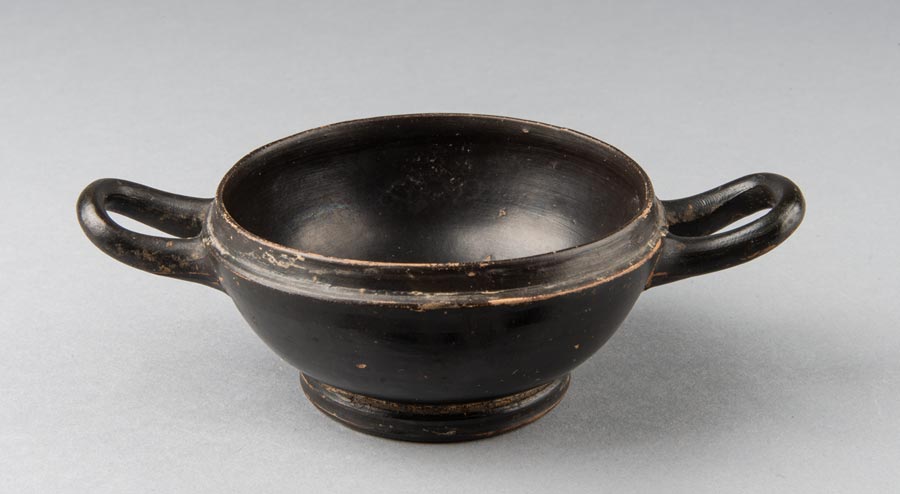
The lekanis (pl. lekanides) was a type of shallow basin that often had a separate lid (note the flat ledge below the rim where the lid would have rested). A well-preserved lekanis lid was found in the ongoing excavations at Olynthos. The figural designs painted on that lid and others like it show images of women, and lekanides are therefore believed to have been used for female toiletries.









